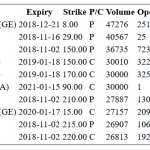The odds for a Fed rate hike are falling like a stone, or so it appears based on the implied inflation forecast via the yield spread on nominal less inflation-indexed Treasuries. The slide is especially pronounced for 10-year maturities, which are now pricing future US inflation at the lowest level since the end of the last recession in 2009 (based on daily data from Treasury.gov as of Sep. 28). The accuracy of the Treasury market’s inflation projections are questionable, as always. Nonetheless, it’s clear that the crowd’s managing expectations down on the outlook for inflation.
Economist Scott Sumner advises that the recent slide in inflation expectations “is reaching frightening proportions.” As a result, “the case for tightening is getting weaker and weaker,” writes the Bentley University professor.

New York Fed President Bill Dudley argued the opposite yesterday, telling The Wall Street Journal that the first round of monetary tightening is still on track for later this year. “If the economy continues on the same trajectory it’s on… and everything else suggests that’s likely to continue… then there is a pretty strong case for lifting off” before the end of this year, he said.
Maybe, although the prospect of higher rates looks dodgy while the Treasury market’s inflation outlook is plunging. “The break-even rate [for inflation] declined considerably yesterday,” noted Kei Katayama at Daiwa SB Investments in Tokyo via Bloomberg. “At the same time, the Fed is trying to calm down the market, saying the US economy is healthy.”
What might resolve the conflict? Economic data, of course. The Treasury market’s latest move looks excessive when viewed through the prism of yesterday’s upbeat August report on personal income and spending.
But for the moment Mr. Market’s effectively forecasting that the economic numbers will deteriorate going forward. The stock market’s on board with a bearish view–the S&P 500 fell a hefty 2.5% yesterday, leaving the benchmark close to its lowest level in nearly a year.













Leave A Comment